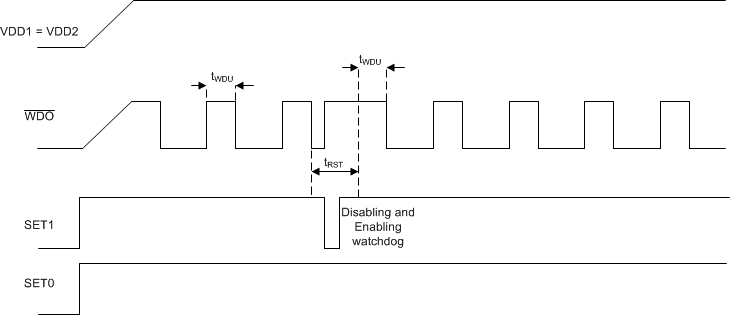ZHCSIK0A July 2018 – October 2021 TPS3430
PRODUCTION DATA
- 1 特性
- 2 应用
- 3 说明
- 4 Revision History
- 5 Pin Configuration and Functions
- 6 Specifications
- 7 Detailed Description
- 8 Application and Implementation
- 9 Power Supply Recommendations
- 10Layout
- 11Device and Documentation Support
- 12Mechanical, Packaging, and Orderable Information
7.3.2.1.2 Disabling the Watchdog Timer When Using the CRST Capacitor
When using the TPS3430 with fixed timing options, if the watchdog is disabled and reenabled while WDO is asserted (logic low) the watchdog performs as described in the Section 7.3.2.1.1 section. However, if there is a capacitor on the CRST pin, and the watchdog is disabled and reenabled when WDO is asserted (logic low), then the watchdog behaves as shown in Figure 7-3. When the watchdog is disabled, WDO goes high impedance (logic high). However, when the watchdog is enabled again, the tRST period must expire before the watchdog resumes normal operation.

There is no WDI signal in this figure, WDI is always at GND.
Figure 7-3 Enabling and Disabling the Watchdog Timer During a WDO Reset Event